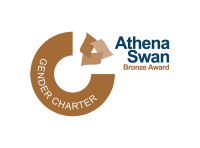
TwoRains Blog
Welcome to the TwoRains blog! This page is regularly updated with the latest blog post from one of our team members. For the full archive of posts please see our wordpress page (click here).
In today's post, Frans tells us about his trip to California for the Geo for Good Summit
The Google (Earth Engine) Experience: Part II
Living the California Dream(in’): 4 days of full-on inspiring applications of geospatial data at the Geo for Good Summit, Sunnyvale CAHello again, this is Francesc reporting on my last Google experience: the Geo for Good User Summit2018. My participation in this event followed the planned Google Earth Engine training that I started in Dublin a few months earlier together with the TwoRains remote sensing team (see our latest post here).
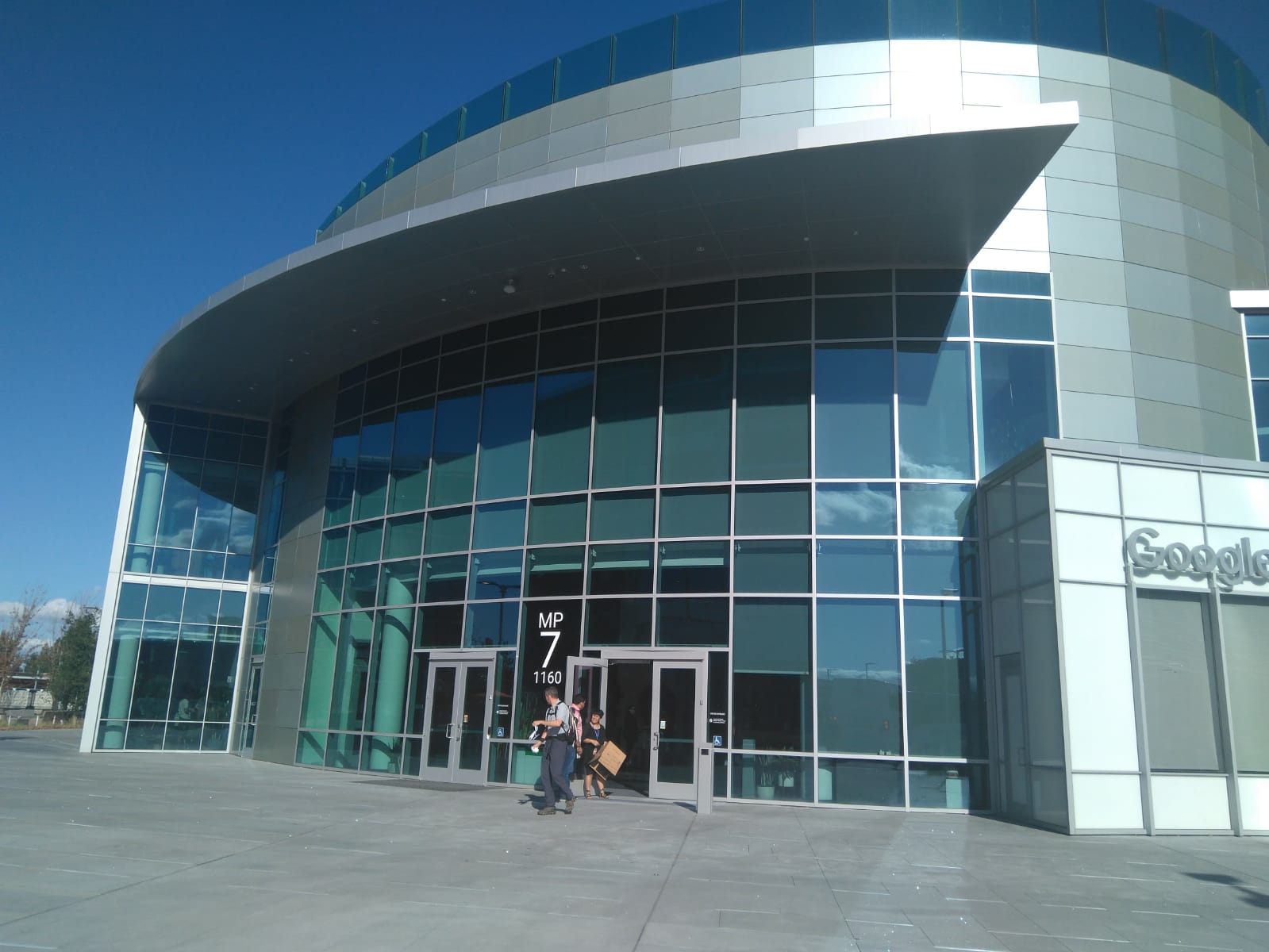 Google Event Center venue at the heart of Google campus in California
Google Event Center venue at the heart of Google campus in California
The Geo for Good Summit is an annual event organised by the Google Earth Outreach program that aims at providing training and resources to non-profits, while showcasing success stories of how individuals and organizations apply Google mapping tools for good causes. In my case, I have known about the Summit since my PhD days, when Google Earth Outreach granted me with a license of GE Pro. The software is freely available to everyone now (you can get the Pro version here!), but I remained fascinated by the GE Outreach aims & goals, as well as by the encouraging case studies they were adding each year. And now it was me going to the Summit!
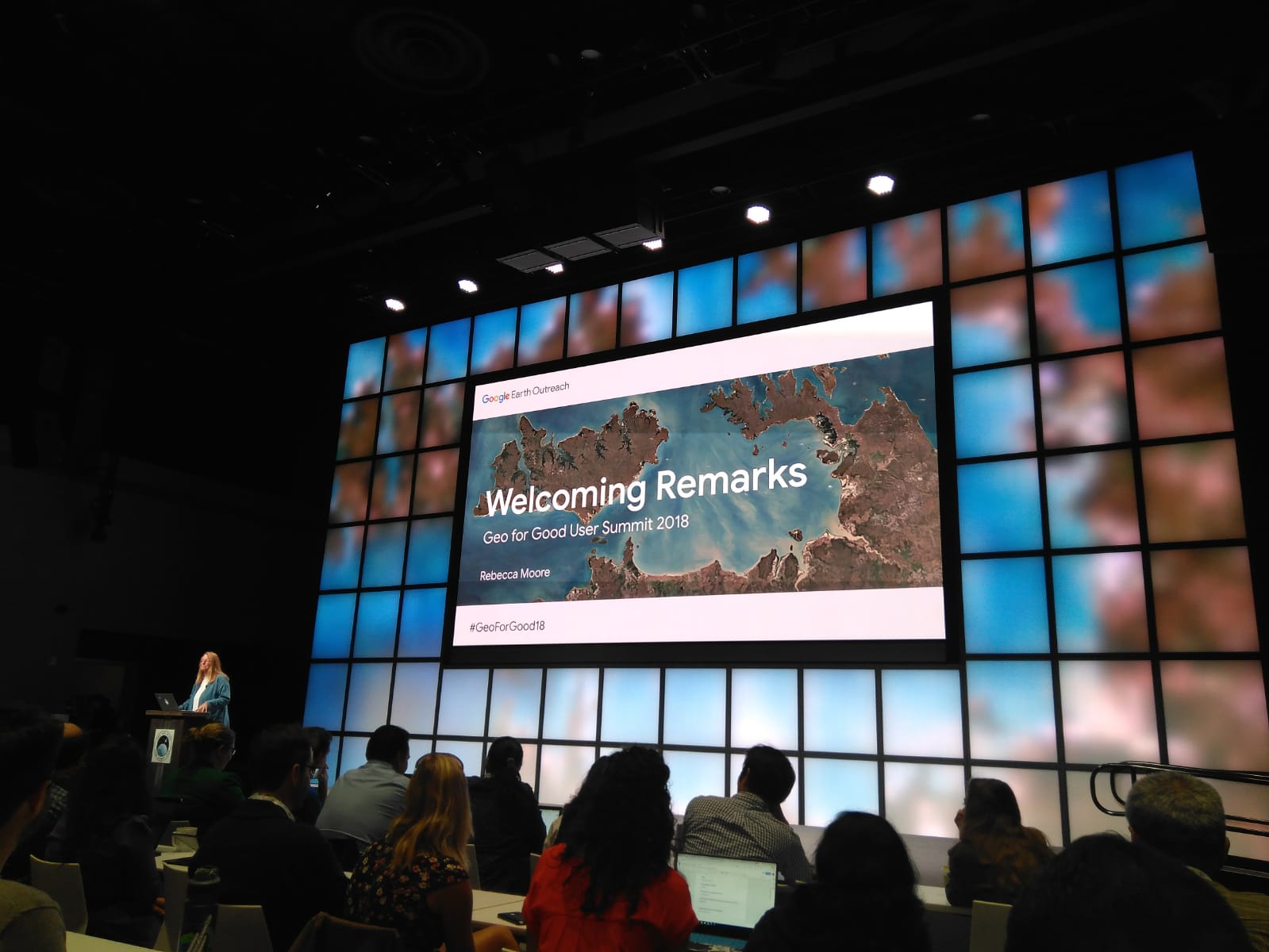 GE’s director Rebecca Moore addressing the welcoming words in the plenary talks room
GE’s director Rebecca Moore addressing the welcoming words in the plenary talks room
In terms of organisation, the Summit was similar to the GEE event held in Dublin, with a mixed agenda of plenary talks, hands-on breakout sessions and -of course! - lots of Hackathon hours to meet and discuss challenges with colleagues. The main difference with Dublin, however, was that the Geo for Good event covered all of the available Google mapping tools. Among those, Google Earth has been the longest star product for more than 15 years in a row, but hands-on sessions also included most of its derived and advanced features such as the Pro version, KML coding, Google Maps and API’s.
The workshop also focuses on collecting and managing data on the field through Open Data Kit, a set of tools that the TwoRains team have been using in their archaeological surveys. The core of the event, nonetheless, was about engaging geospatial storytelling to wider public audiences. To do that, you could use well-known Google resources such as MyMaps and Tour Builder, or create geotagged and 360° images and videos including VR. Among the novelties, I was impressed by the dissemination possibilities of the new Google Earth Voyager and Studio features.
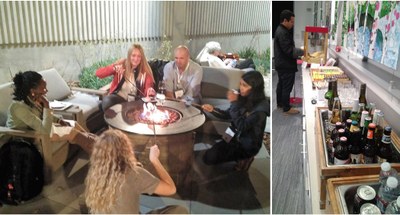 Yes, we toasted marshmallows at Google’s and they have a popcorn maker! It was time for cinema with the inspiring “Into the Okavango”, a National Geographic featured documentary
Yes, we toasted marshmallows at Google’s and they have a popcorn maker! It was time for cinema with the inspiring “Into the Okavango”, a National Geographic featured documentary
In the last few years, Geo for Good has included an increasing number of GEE training sessions -a fact that only reflects the growing reception of GEE among scholars. After some months working with the platform, I really enjoyed the more advanced sessions conducted directly by the GEE developer team, and I was fond of the thrilling Global Forest Watch and Global Surface Water datasets.
Besides the practical sessions, we listened to talks from many of global organisations facing the world’s biggest challenges, and it was again a unique opportunity to meet with enthusiastic individuals of geospatial data from all disciplines. Following the outreach perspective of the event, many of the talks and sessions are available online here, and I recommend this short video summarising the Summit. Last but not least, the Summit was held in the stunning Google HQ in Sunnyvale in a warm and radiant Californian autumn, adding to the Google experience a feeling of being at my Mediterranean home.
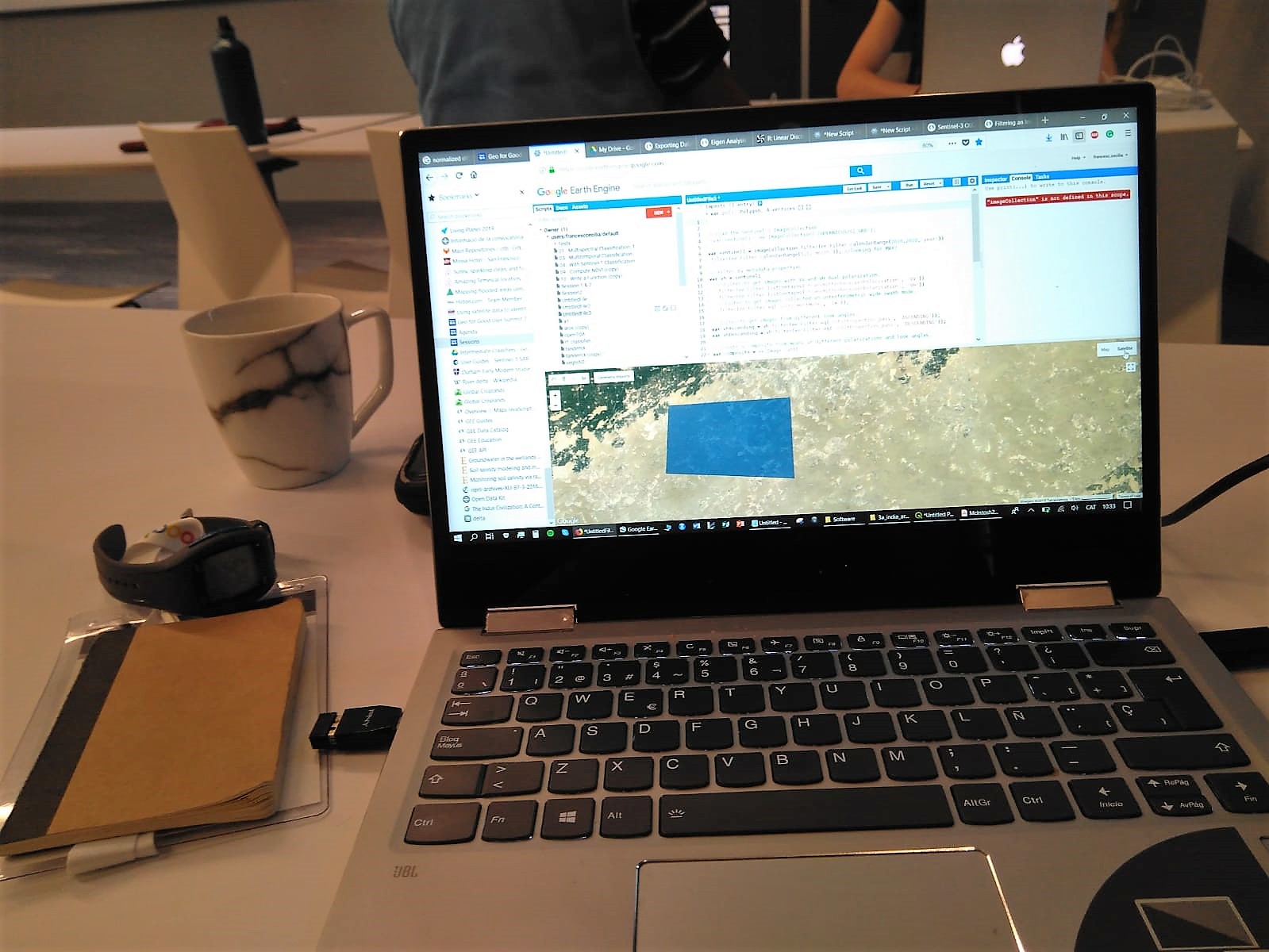 A day in the Summit: GE Engine and lots of coffee
A day in the Summit: GE Engine and lots of coffee
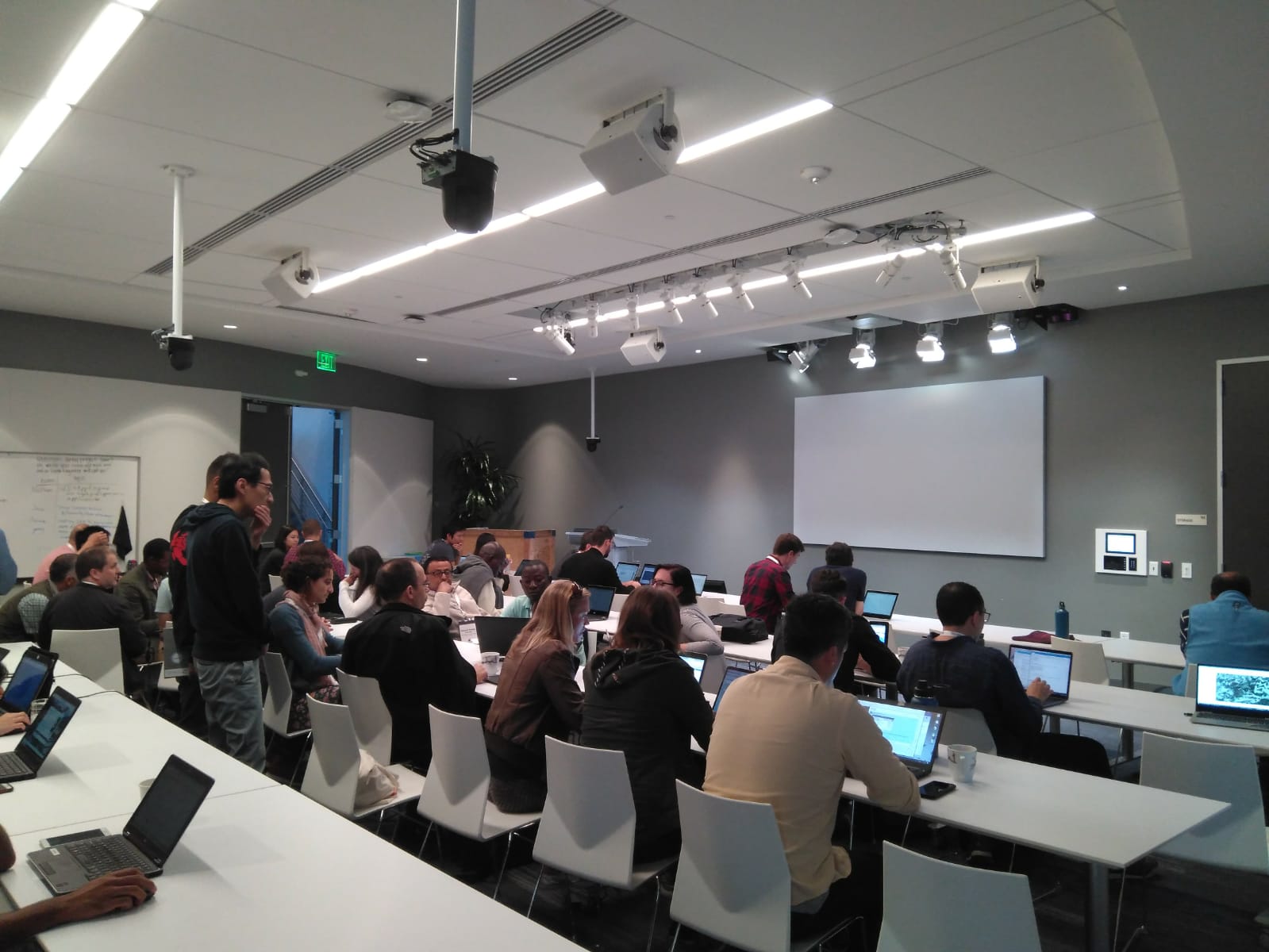 It’s time for a hackathon!
It’s time for a hackathon!
